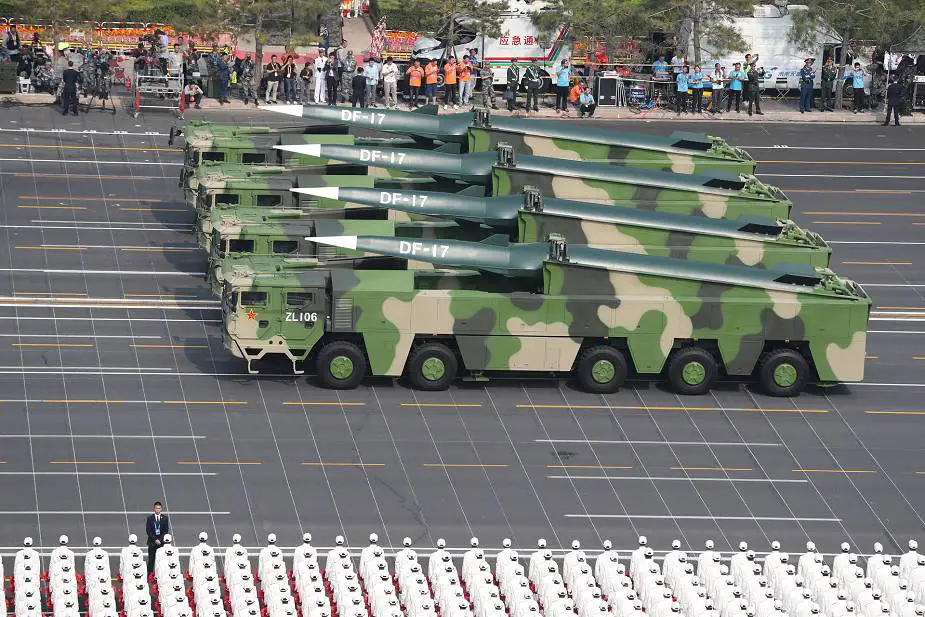According to information published on the Indian newspaper website "The Week" on January 23, 2022, a military expert told Defense News, that China could offer DF-17 mobile ballistic missile systems to Pakistan in response to India's purchase of the Russian S-400 air defense missile system.
Follow Army Recognition on Google News at this link

Chinese DF-17 mobile solid-fueled road-mobile medium-range hypersonic ballistic missile. (Picture source China Internet)
On January 17, 2022, Army Recognition has reported that the first S-400 air defense missile system regiment of the Indian army will be ready for operational deployment by April 202, while four other S-400 regiments will be ready by 2023.
With the DF-17, Pakistan would have a new military power in terms of ballistic missiles which would not be detectable by the Russian S-400 air defense missile system. Indeed, with its high flight speed, the hypersonic missile is difficult for most current radars to track and existing surface-to-air missiles to engage.
The DF-17 or Dongfeng-17 is a solid-fuelled road-mobile medium-range ballistic missile developed by the Chinese defense industry that mounts the DF-ZF HGV (Hypersonic Glide Vehicle). HGV differs from traditional ballistic missiles by their ability to maneuver and operate at lower altitudes. The combination of maneuverability and high speed poses significant challenges for conventional missile defense. Most hypersonic glide vehicles have been designed with a ballistic missile for the first stage. A hypersonic missile is able to fly at a speed faster than five times the speed of sound, or Mach 5 (6,100 km/h).
China has tested the DF-17 DF-ZF HGV at least nine times since 2014. U.S. defense officials have reportedly identified the range of the DF-ZF as approximately 1,950 km and have stated that the vehicle may be capable of performing “extreme maneuvers” during flight.
Citing information published on the website "Missile Threat", the missile of DF-17 is solid-fueled, measures around 11 m in length, and weighs around 15,000 kg. The DF-17’s booster appears to be the same as that used for China’s DF-16 ballistic missile. Its accompanying DF-ZF HGV reportedly reaches speeds of Mach 5-10 (1.72-3.43 km/s) in its glide phase.7 U.S. intelligence assessments suggest that the DF-17 possesses a range between 1,800 and 2,500 km.8 Although Chinese commentators have emphasized the DF-17’s conventional mission, the missile may alternatively equip nuclear warheads.
The DF-17 has demonstrated a high degree of accuracy in testing, with one U.S. government official saying a test warhead “within meters” of its intended, stationary target.10 U.S. defense officials have also said the DF-ZF HGV performed “extreme maneuvers” and “evasive actions” in previous test flights.11
Some reports suggest China could develop the DF-17 into a second-generation anti-ship ballistic missile (ASBM), further enabling China’s strategy to deter U.S. regional intervention.12 In January 2019, PLA officials claimed to have an anti-ship DF-17 variant under development.
The DF-17 along with the DF-ZF was officially unveiled at the Chinese National Day military parade on October 1, 2019.














